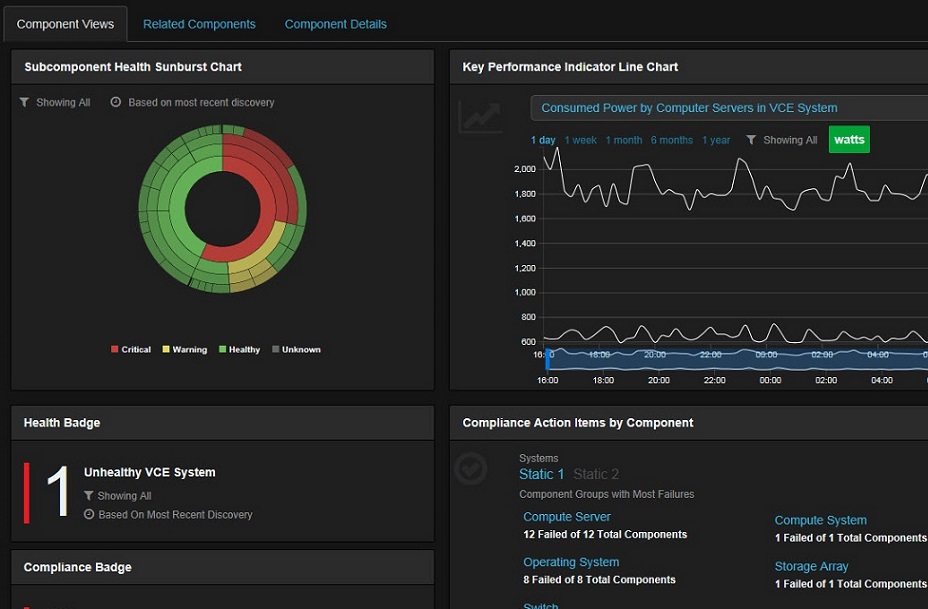Sailing head-on into a perfect storm of new regulatory requirements, higher-than-ever quality of patient care expectations and cost control pressure, the healthcare industry needs a rescue plan. Lucky for you, there are Healthcare IT organizations who have already navigated these waters safely by transforming their infrastructure, operations and economics—and they can show you the way.
Infrastructure
Aging, siloed equipment drives infrastructure transformation. Eventually, you cross a threshold when
your infrastructure can’t deliver the higher performance processing, burgeoning storage and always-up accessibility that today and tomorrow’s healthcare information and management systems require.
 Trailblazers in healthcare IT transformation have discovered that they can migrate current applications and deploy new applications onto modern infrastructure faster and with better results if they “buy versus build.” Buying pre-engineered, pre-manufactured converged (compute, storage and network) infrastructure versus building it (i.e., integrating testing and piloting the components) yourself is the uber IT trend.
Trailblazers in healthcare IT transformation have discovered that they can migrate current applications and deploy new applications onto modern infrastructure faster and with better results if they “buy versus build.” Buying pre-engineered, pre-manufactured converged (compute, storage and network) infrastructure versus building it (i.e., integrating testing and piloting the components) yourself is the uber IT trend.
Converged infrastructure delivers modern virtual computing power, scale-out storage, and high availability infrastructure in weeks versus months of do-it-yourself infrastructure.
Molina Healthcare transformed, resulting in: application and storage performance boosts of 25 to 40 percent; nearly instantaneous, simplified replenishment of infrastructure resources to handle ongoing increases in processing loads; and predictable service levels and high application availability in accordance with state regulations.
Operations
Converged infrastructure drives operational transformation. No longer siloed, converged infrastructure fosters converged operations characterized by standardized, more efficient and continuous processes. These process improvements are enabled by how converged infrastructure components are engineered and manufactured as a single system—and by software, like VCE Vision, that has the intelligence to understand the system, the automation to reduce manual system management tasks and the visualization to report on system status.
Converged management focuses on infrastructure health and life cycle management.
Converged health management understands infrastructure:
- Holistically: sees total system health based on compute, network and storage components and dependencies
- Top-down: sees application workloads and their underlying infrastructure components
- Horizontally: sees utilization and capacity of components across systems as pool of resources.
Converged life-cycle management understands:
- Release Certification Matrix Compliance: desired firmware and hypervisor release levels to keep all components continuously stabilized and optimized
- Security Compliance: desired configurations to keep all components continuously security hardened.
Wake Forest Baptist Medical Center transformed, resulting in: substantially reducing 70-percent of the IT team’s time that was devoted to routine break-fix support—allowing more time for creating added value; ramping up new environments for applications in only 3 to 4 hours; simplifying system administration by reducing CPU loads from 75% to 15% and by delivering nearly 100% availability.
Economics
Converged infrastructure and operations drive economic transformation. It’s no secret that IT budgeting is a tug-of-war: OPEX versus CAPEX and operations versus development. A report by industry analyst IDC indicates that up to 78% of IT operations budget is often devoted to just “keeping the lights on” functions (monitoring, managing and sustaining infrastructure), with only the remainder left for applications and innovation.
The same IDC report cites case studies where converged infrastructure reduces time spent “keeping the lights on” by up to 41%.
HealthEast Care System made the transformation, resulting in: five-year operations savings greater than 50%, with those savings reinvested into their electronic health record (EHR) application for better patient care; and a five-year total cost of ownership expected to be 30% lower by running their EHR and other applications on the same converged infrastructure system.
If you are attending the HIMSS conference in Las Vegas this week you can learn more about these converged approaches at EMC Booth #1921 on the Exhibit floor.
For videos about the healthcare organizations cited above, click on their logos here.
To see videos about Converged Management and Operational Transformation, go here.
To learn about the range of converged infrastructure systems, go here.